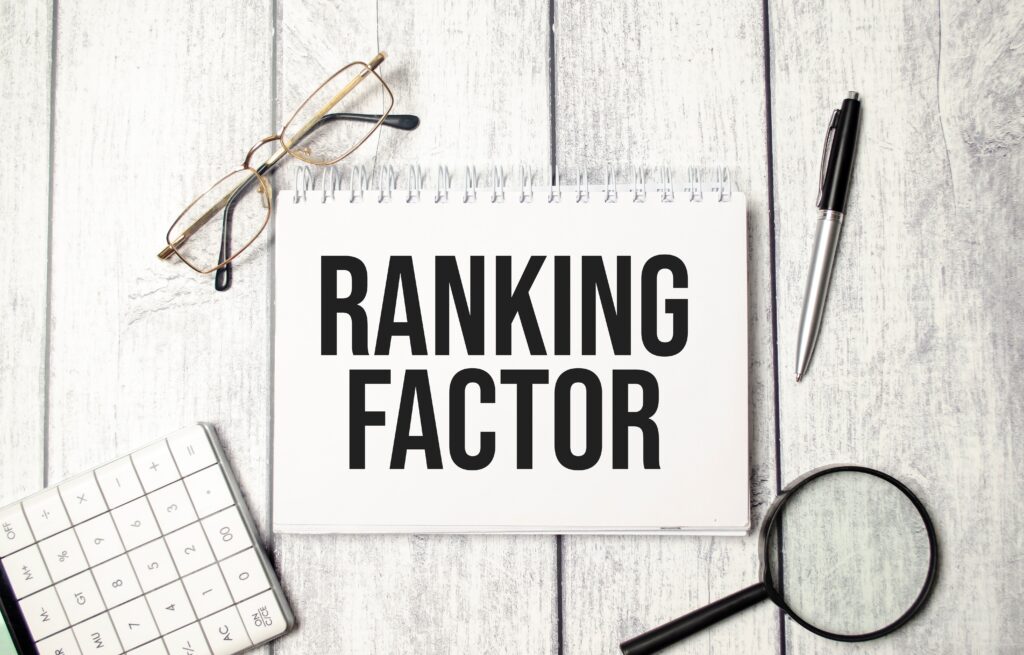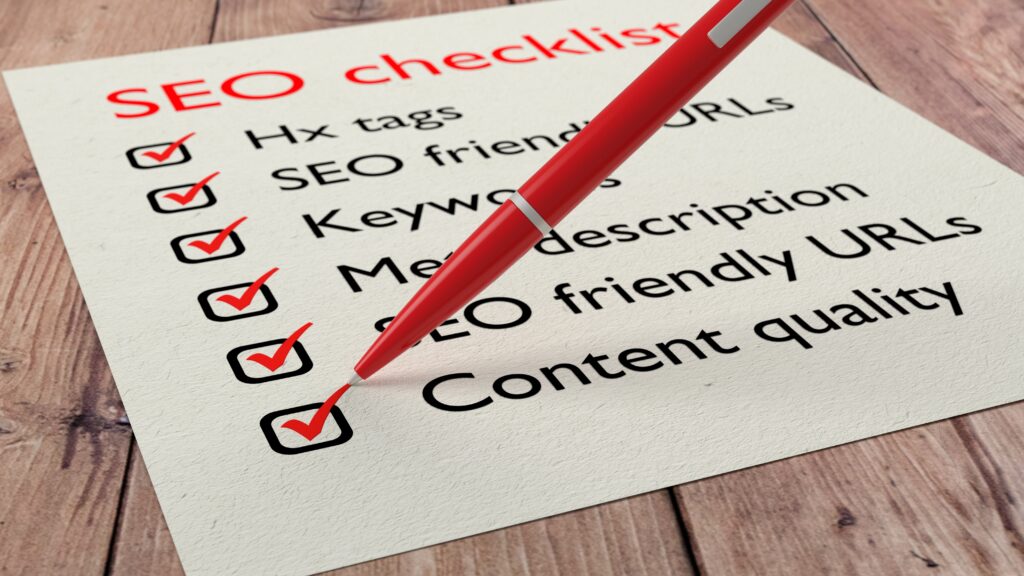Do you want to know the secret of how to rank your e-Commerce store at the top of Google?
Of course, you do especially for those E-commerce Businesses. And that’s why we’ve put together this comprehensive guide on the e-commerce SEO ranking factors that matter most. Inside, you’ll learn everything from how to optimize your website for search engines to creating quality content that will keep customers coming back for more.
Don’t waste another day not being at the top of Google – read this guide today and start seeing results in no time!
Let’s get started!
e-Commerce SEO Ranking Factors Guide
There are a lot of ranking factors that e-commerce entrepreneurs should be aware of when it comes to SEO. Here are the four most important ones:

Guidelines in Developing Ranking Factors for a Dispensary.
The four most important ranking factors for e-commerce sites are:
1. Title tags or meta titles
2. Meta descriptions
3. H1 tags
4. Product descriptions
To learn more and broaden our understanding of the SEO techniques of ranking factors, let’s read the following information.
Ecommerce SEO Checklist for Tips Techniques Ranking Factors
1. Do your research.
Before you even begin to improve your e-commerce website for SEO, it’s important that you take the time to do your research and understand the basics of SEO.
2. Identify your target keywords.
Once you have a good understanding of SEO basics, it’s time to start thinking about the specific keywords that you want to target. When selecting keywords, it’s important to consider both the search volume and the competition. Alternatively, you may want to focus on more niche keywords that have lower search volume but are easier to rank for.
3. Optimize your website content.
One of the most important aspects of SEO is optimizing your website content for your target keywords. This means including your keywords in the title, meta tags, headers, and body of your web pages. However, it’s important to avoid keyword stuffing, which is when you include too many keywords in your content and it becomes difficult to read.
4. Build backlinks.
Another important SEO ranking factor is the number of backlinks pointing to your website. Backlinks are incoming links from other websites. When a website links to your site, it’s seen as a vote of confidence in your content. The more backlinks you have, the higher your website will rank in search engine results pages.
5. Monitor your progress.
Finally, it’s important to keep track of your SEO progress over time. This will allow you to see which strategies are working and which ones need to be tweaked. There are a number of great tools that can help you with this, including Google Analytics and Raven Tools.
By following these tips, you can improve your e-commerce website’s ranking on search engine results pages and attract more traffic to your site.
Ecommerce SEO Checklist:
Keyword Research
Our e-commerce SEO checklist starts with keyword research using keyword tools. Selecting the appropriate keywords is crucial because it might raise your website’s visibility to the correct audience.

Digital Best Tips to Improve Dispensary Website search ranking.
As a result, you must discover your Primary keywords and group them into categories that are appropriate for your searcher, even though the industry keeps whispering about the drawbacks of keyword research.
Conducting Keyword Research
When you begin your keyword research for your online store, be sure to focus on these 3 important areas.
1. Optimize the Most Important Pages of Your Website
2. Search Long-Tail Keywords for Your Blog
3. Do Not Confuse Search Engines with Keyword Cannibalization
Simplifying Website Architecture
Create a website structure that makes it simple for users to navigate from the homepage to the category pages.
In addition to enhancing user experience, this will lower bounce rates.
Load Speed
If a website takes longer than three seconds to load, more than 40% of visitors leave and choose another choice, according to studies.
Page loading speed:
Google values websites with fast-loading pages, so make sure your page loads quickly. You can use Google’s mobile testing tool to check your page speed.
Google will assign you a score between 1 and 100 for Mobile devices and desktops, as well as steps to improve your load times. Also, speed is a ranking factor for both desktop and mobile searches.
All pages should be as readable on mobile as they are on desktop searches. Use Google’s Mobile-Friendly Test to double-check your mobile optimization.
Voice Search Optimization
Here, the distinction between voice search behavior and typed search behavior is rather clear. Simply make sure the appropriate trigger words are included when optimizing your website for voice search to encourage action.
On-Page E-Commerce SEO
As the term suggests, on-page SEO refers to all the steps you take to improve your website’s ranking on search engine results pages.
Internal linking, usability, mobile responsiveness, client testimonials, responsive design, and social media integration make up the ideal on-page SEO approach.
To see if you’re currently ranking in Google Discover, check out the report in Google Search Console.
Internal Linking
You can link pages on your website to other pages on your website using internal linking. You may develop your anchor text for internal links, which helps your website rank higher on search engines.
The internal linking structure is how external links to and from the content are used.
As much as it’ll be a good signal to Google that authoritative websites link back to you, you also send a great message when you link back to external websites in your niche.
So, naturally, high-quality links are a crucial SEO ranking signal.
Usability
As the owner of an online store, your aim should be to provide excellent usability to your clients to keep them coming back.
Social Media Integration
When it comes to search engines, social media integration indicates the valuable and approachable image of your website.
This SEO checklist should help you get started with optimizing your website for search engines. Remember, SEO is an ongoing process, so don’t forget to keep up with the latest trends and changes, and be prepared to adjust your strategy as needed. And most importantly, be patient – SEO takes time to produce results. But if you stick with it, you can see some great long-term results for your website.
Understanding SEO or “How Do I Rank Higher on Google?

How to rank in google search with SEO.
Many people wonder how Google organic rankings work. So before we get into the actual search engine ranking factors, let’s answer some of the basic questions most people have about SEO.
What Is “Ranking” in SEO?
SEO stands for search engine optimization, which simply means making the web pages more likely to get ranked on a search engine. But let’s be honest: at this point, that really just means Google.
Why Is Ranking Important?
The ranking is important because it determines which pages show up first in search engine results. And as we all know, the higher up you are in the search results, the more likely people are to find your page.
So there you have it! A brief overview of what ranking is and why it’s important. Stay tuned for more tips on how to improve your SEO.
What factors does Google consider when ranking pages for SEO?
Google’s stated purpose is to “organize the world’s information and make it universally accessible and useful.” Relevant search results are a key part of that goal. Here’s how the process works:
First, Google’s search bots (pieces of automated software called “spiders”) crawl the web. This simply means they visit web pages.
Next, the spiders add correctly optimized and crawlable pages to Google’s index and catalog them.
Finally, when people search Google, it displays what it believes are the most relevant results based on the search terms they enter (out of the trillions of pages in Google’s index).
Google has various, and deeply complex algorithms in search engines to decide which content gets displayed and in which order. And make sure not to use duplicate content as it’s considered a negative factor for SEO ranking.
Once your page appears on the SERP (search engine results page), you have to rely on your page title and meta description to get searchers to click your link and visit your site.
How Do Google Search Rankings Work?
Google has even updated the search results with a new featured snippet that is designed for “multi-intent” queries.
Marketers across all sectors will need to follow Google’s Page experience update, which is a continuation of their long-standing commitment to the user experience. Improve Your User Experience User experience (UX) has an impact on SEO, as we have seen with the recent updates to Page Experience.

Understanding Google Search Rankings.
Google analyzes its authority by identifying its age and content expertise (topic authority).
Topic authority, or in some way, content expertise, is Google’s way of ranking website pages based on how authoritative its sources are.
By considering over 200 different factors. Some of the most important ranking factors include things like the quality of your content, the keywords you use, and the links you have to other websites.
According to Google’s own search quality ratings, the main content on each page is indexed by checking factors like:
- The purpose of the page
- The quality and amount of content
- Website info and content creator info
- Website reputation and content creator reputation
- User interaction with the page (time on page, bounce rates, etc.)
- Content expertise, authority, and trustworthiness (E-A-T)
The last factor, E-A-T, will be explored in more detail below.
It’s important to note that all the factors listed above go into Google’s search algorithm and help determine Search Engine Optimization (SEO) ranking.
In conclusion, SEO is a very important part of your e-commerce strategy. It can help you increase website traffic, bring new customers and search queries to your site, as well as build up a loyal following of followers who are always looking forward to purchasing what they see on the internet about their favorite products or topics. Our SEO expert team understands just what needs to be done when implementing this process, so don’t hesitate to contact us today if you want more information about getting started right away.
Key Tactics to Include in Your Ecommerce SEO Strategy

Importance of a solid SEO Strategy.
The best e-commerce SEO strategy involves:
- Keyword research – to identify the terms that customers are searching for site architecture based on those keywords.
- On-page optimization through strategic keyword placement in meta tags and content.
- Technical SEO to ensure search engines can crawl the site effectively.
- Local SEO to drive organic traffic from local searches, content marketing to generate additional organic traffic, and link building to improve the site’s authority.
- Measuring SEO success is essential to track progress and optimize the strategy over time. Google Analytics and Ahrefs are two tools that can be used to measure SEO success.
- To promote engagement locally, SEO professionals should begin by optimizing a brand’s Knowledge Graph panel, Google My Business listing, and social media profiles.
Frequently Asked Questions
What Is SEO for E-Commerce?
SEO for e-commerce is a strategy that helps web retailers rank higher in search engine results. A well-designed and optimized website with high-quality content will rank better in search engines such as Google, increasing your store’s visibility and driving traffic.
Use a content delivery network to cache your content.
Things to consider to begin with your content:
- Content for SEO
- Content Quality
- Content Strategy
- Content Hierarchy
- Content to Keywords
- Content Visible/ Visible Content
- Content Optimization
- Content Marketing Resource
- Content Users
- Essential Content
- Informational Content
How to Find Long-Tail Keyword Search Terms for E-commerce Website?
There are a few different methods that you can use to find long-tail keyword search terms for your e-commerce website. And if you’re running an e-commerce business, then you know how important it is to have a solid SEO strategy in place. And part of that strategy is finding and targeting long-tail keywords.
Long-tail keywords are those that are more specific and usually have lower search volume than shorter, more generic keywords.
So how do you find long-tail keywords that will be valuable for your business? Here are three tips:
1. Use keyword research tools
There are a number of different keyword research tools available, both free and paid. Google Keyword Planner is a great option, especially if you’re already using Google AdWords. But there are other options available as well, such as Moz Keyword Explorer and SEMrush.
2. Look for questions that your target customers are asking
Another great way to find long-tail keywords is to look at the questions that your target customers are asking. This can give you some insight into the language they’re using and the type of information they’re looking for.
3. Use negative keywords
You can use Google Keyword Planner to find negative keywords. Just enter a seed keyword and click on the “Keyword Ideas” tab. Then, click on the “Filter Keywords” drop-down and select “Negative.”
By following these tips, you can find long-tail keywords that will be valuable for your e-commerce business. So start doing your research and see what you can come up with.
What are the Top-Ranking Factors for E-commerce Website?
There are a number of factors that can affect the ranking of an e-commerce website. Some of the most important ones include:
1. The quality of the products or services offered
2. The user experience on the site, including things like ease of navigation and search functionality
3. The overall design and look of the site
4. The reputation of the company
5. The number of inbound links from other websites with high domain authority
Overall, the goal is to have a well-rounded e-commerce website that provides a positive experience for users and helps them find what they’re looking for. By focusing on these key areas, you can help ensure that your site ranks highly on search engine results pages (SERPs), helping you to attract more visitors and potential customers.
Conclusion:
If you want to rank on Google and you need assistance with your e-commerce business, ePropel is the right company for you. ePropel is an SEO company that uses a proven 3-step system to assist businesses to increase organic traffic to their website. Try our services, and you’ll agree that it’s worthwhile if you want to know what it’s like to be on top of Google!